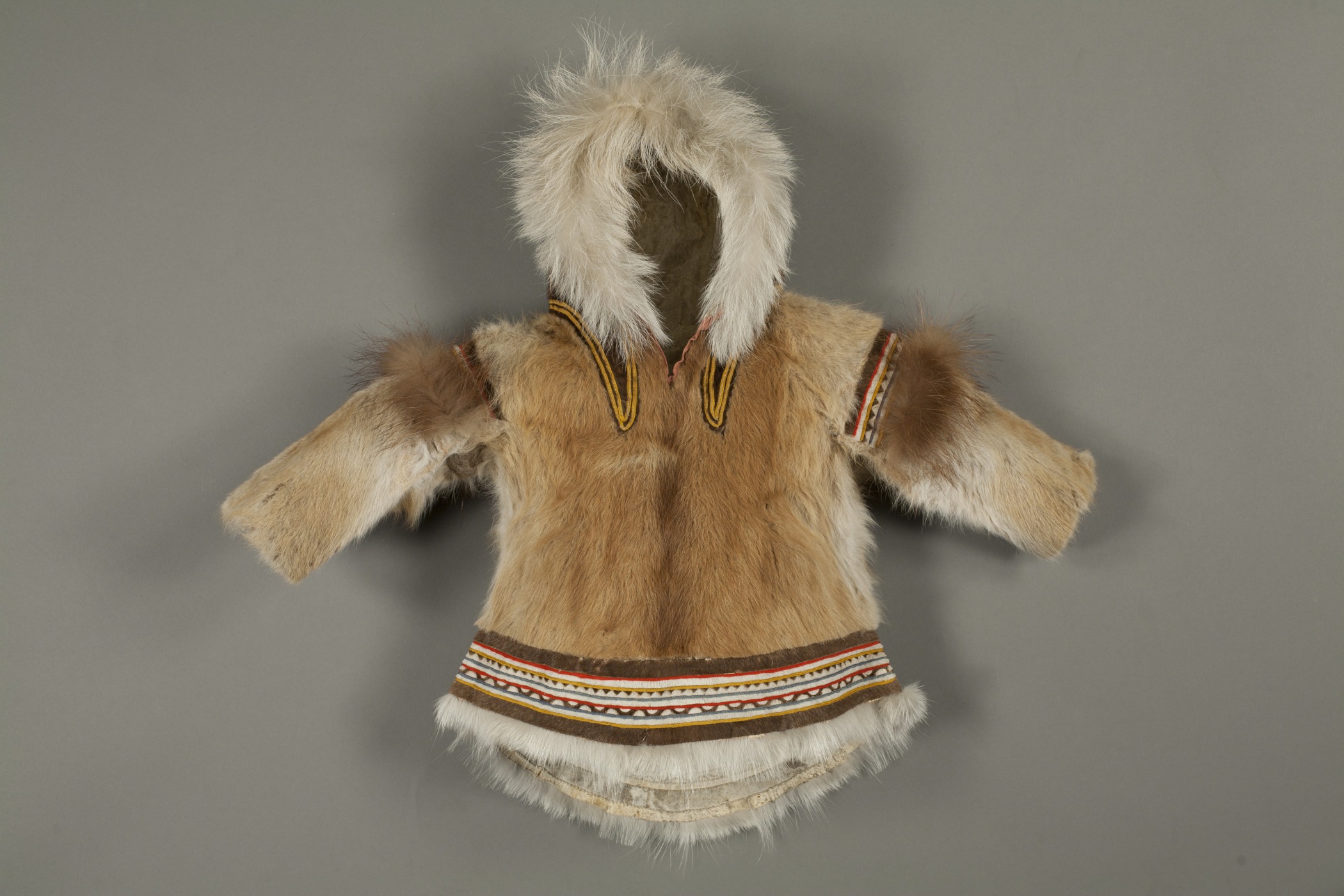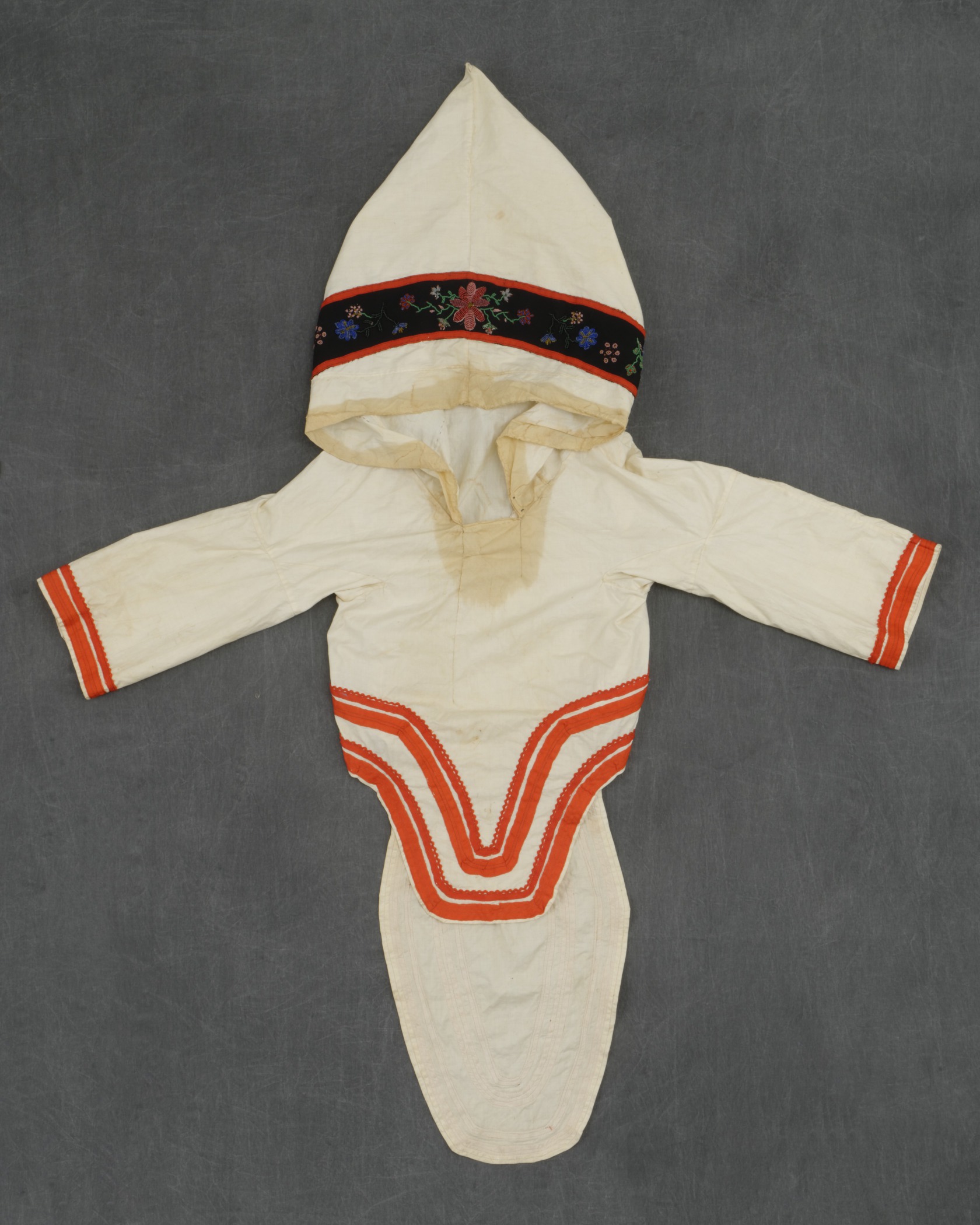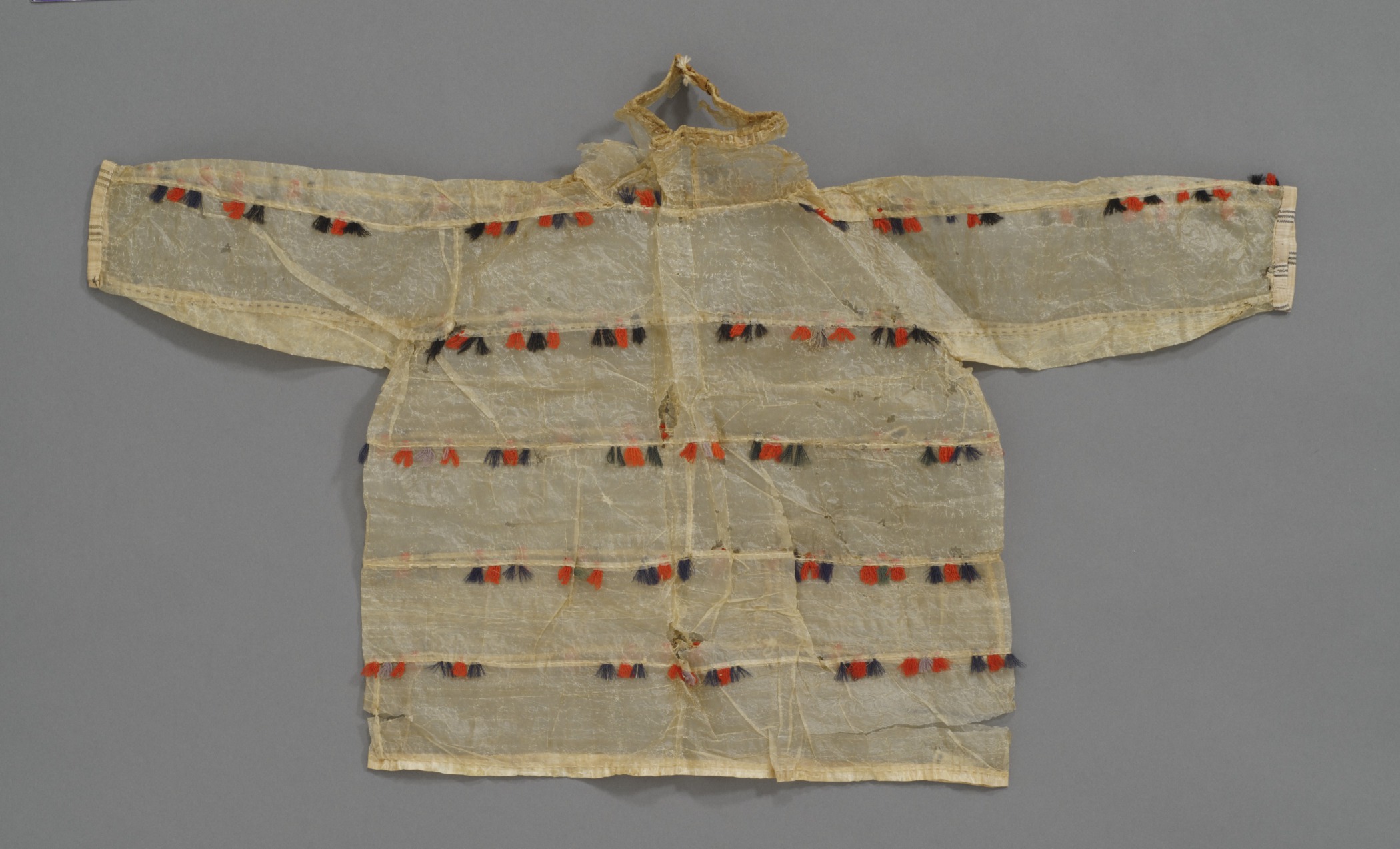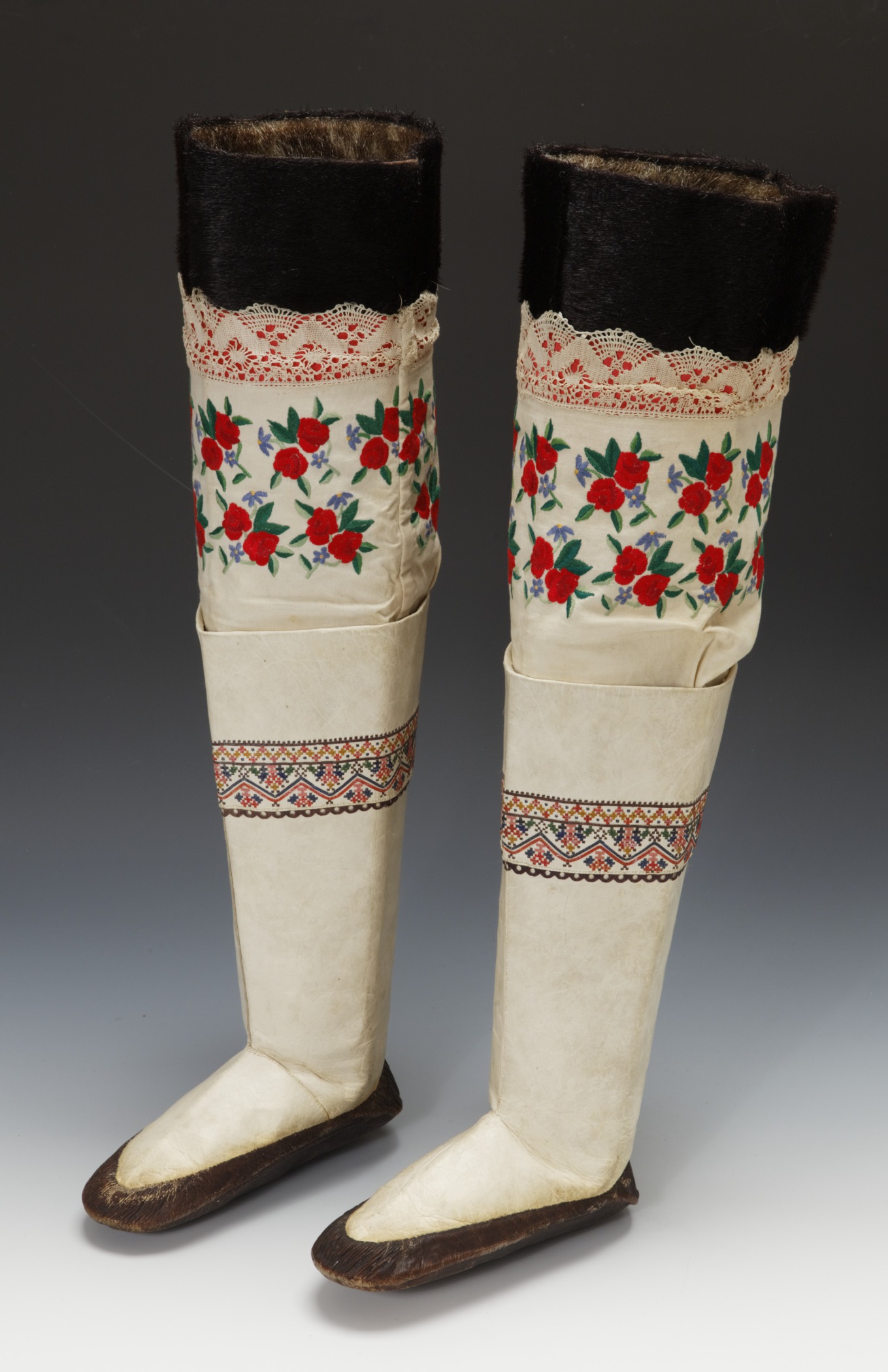Labrador Inuit
Woman’s summer parka
- Collected 1929–30
- Cotton cloth and glass beads
- Height: 63 3/8 in.
Hood Museum of Art, Dartmouth College: Gift of Robert O. Fernald, Class of 1936; 158.25.1422
visibilityLook & DiscussSummers are short in the Arctic and are generally cool, but some days can be quite warm. Although originally all clothing was made from animal hides, indigenous people found European cloth to be more comfortable than animal hides in the summer months.
This woman’s parka, or amauti (ah-MOUW-tee), was made out of cotton cloth, but cut and sewn into a traditional shape. (The stain around the neckline is a result of wear and use.)
explore the object
The rounded apron in the front and “beaver tail” in the back of this parka provided extra coverage for women when completing a task on their laps or sitting on the ground. In contrast, men’s jackets have a straight seam around the bottom.
The large hood of the woman’s parka served as a baby carrier. Children up to two years old were often carried on their mother’s backs inside this kind of hood. The strip around the hood with glass beads sewn into the shapes of flowers and leaves is called a “parka band.” Local summer flowers, and also European floral fabrics and designs, inspired the glass-bead embroidery. The design on this lightweight garment celebrates the joys of the short Arctic summer.
Kalaallit (West Greenlandic Inuit), men’s hooded parka for spring and summer, about 1897. Sealskin, dog fur cuffs, sinew, and cloth, height: 36 1/4 in. Hood Museum of Art, Dartmouth College: Gift of Mrs. William Stickney, Class of 1900W; 164.21.15428.
The maker of these parkas adorned them with red and blue cotton trim on the hems and sleeves. Historically, a similar effect could be achieved with different-colored furs. This spring and summer parka from Greenland is similar to the types of parkas worn before cloth became available. The dark fur trimming the hood, sleeves, and hem provides a decorative contrast to the lighter fur on the torso of the parka.




